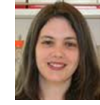Beyond STEM: Discussing Today’s Problems
 Think of our usual academic silos: math, biology, physics, chemistry, robotics, computer programming. And these are only the STEM silos. Experts in these subjects probably wrote the textbook for each course, and to be an expert, one needs to have spent lots of time in his/her own silo! Then at the secondary school level, we have teachers silo’ed—as teachers of algebra, biology, chemistry, etc. Silo’ed educational ‘materials’ are neatly arranged, scaffolded and presented - some of it centuries old. And tests, including high-stakes standardized tests, focus on silo’ed content. Students slave to understand and repeat back what they have learned, but often without much motivation. Their learning occurs in silos. Read more. Think of our usual academic silos: math, biology, physics, chemistry, robotics, computer programming. And these are only the STEM silos. Experts in these subjects probably wrote the textbook for each course, and to be an expert, one needs to have spent lots of time in his/her own silo! Then at the secondary school level, we have teachers silo’ed—as teachers of algebra, biology, chemistry, etc. Silo’ed educational ‘materials’ are neatly arranged, scaffolded and presented - some of it centuries old. And tests, including high-stakes standardized tests, focus on silo’ed content. Students slave to understand and repeat back what they have learned, but often without much motivation. Their learning occurs in silos. Read more.
STEM Education in China
 The counterpart of the term “STEM” in China should be “Li Gong Ke”, which is translated from the English words “science and technology” and becomes a general term of math, science, technology and engineering. In China, the education of ‘’Li Gong Ke” (STEM) is primarily provided at the level of higher education. During basic education, which includes elementary and secondary education (comparable to K-12 education in the U.S.), math and science—especially math—receive much more attention because they are among the subjects in the Gaokao, China's national college entrance exam. Students start to learn math and some simple science in elementary school. When the students go to middle school, they study specific science courses such as Chemistry, Physics and Biology. Since math is always one of the three mandatory subjects in the Gaokao, the students have to reach a certain math level before they can go to any college, regardless of major. Compared to the students in the U.S., more students in China choose STEM majors because STEM degrees provide a wide range of career options. Read more. The counterpart of the term “STEM” in China should be “Li Gong Ke”, which is translated from the English words “science and technology” and becomes a general term of math, science, technology and engineering. In China, the education of ‘’Li Gong Ke” (STEM) is primarily provided at the level of higher education. During basic education, which includes elementary and secondary education (comparable to K-12 education in the U.S.), math and science—especially math—receive much more attention because they are among the subjects in the Gaokao, China's national college entrance exam. Students start to learn math and some simple science in elementary school. When the students go to middle school, they study specific science courses such as Chemistry, Physics and Biology. Since math is always one of the three mandatory subjects in the Gaokao, the students have to reach a certain math level before they can go to any college, regardless of major. Compared to the students in the U.S., more students in China choose STEM majors because STEM degrees provide a wide range of career options. Read more. |
 |
Biology Class in the Time of Ebola
 When I was planning my current UMass Boston Honors course early in the spring, I had no idea how timely our reading of the Nobel and Pulitzer Prize-winning novel, Arrowsmith (by Sinclair Lewis), would be. Despite being written 90 years ago, the pages of Arrowsmith read like the daily news, due to the tragedy of the Ebola outbreak. When I was planning my current UMass Boston Honors course early in the spring, I had no idea how timely our reading of the Nobel and Pulitzer Prize-winning novel, Arrowsmith (by Sinclair Lewis), would be. Despite being written 90 years ago, the pages of Arrowsmith read like the daily news, due to the tragedy of the Ebola outbreak.
In Arrowsmith, the main character (Martin Arrowsmith) discovers a potential new treatment for bubonic plague, which works well in his animal tests. But before he can conduct any proper clinical trials for safety and efficacy, he is sent off to the fictional Caribbean island of St Hubert, where massive numbers of the residents are perishing from an enormous outbreak of the plague. Entire villages are being lost to the epidemic. Martin is faced with the ethical dilemma of whether or not to carry out the controlled trial he has been instructed to perform, thereby providing only half the residents with the experimental treatment. Read more.
STEM Outreach: Adopt... Adapt... Accomplish
 Let’s talk about the three “A”s of STEM activities and the wealth of materials available. I have my favorite sources, PBSKids, Teachers TryScience, Sparticl, and, of course, MIT BLOSSOMS. If you are looking for vetted activities, head to CPALMS. You don’t have to be a Florida teacher or resident to take advantage of this great toolbox. Let’s talk about the three “A”s of STEM activities and the wealth of materials available. I have my favorite sources, PBSKids, Teachers TryScience, Sparticl, and, of course, MIT BLOSSOMS. If you are looking for vetted activities, head to CPALMS. You don’t have to be a Florida teacher or resident to take advantage of this great toolbox.
I’m a member of the National Science Teachers Association, NSTA, which has a wealth of resources both on-line and in print. Its Listservs are great communication vehicles to share experiences, look for help, and get new ideas. As an informal educator, I work mainly with elementary and middle school students but I subscribe to their journal, “The Science Teacher”, which focuses on high school. The activities for older students often spark ideas for an activity for the younger grades. Read more. |